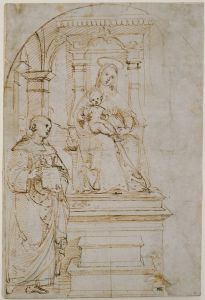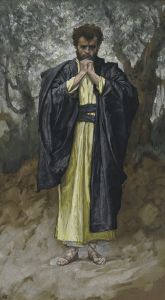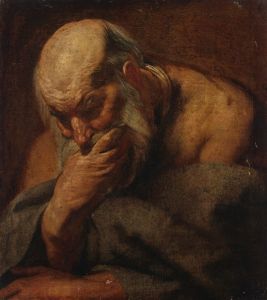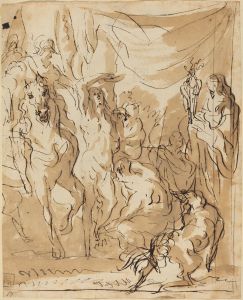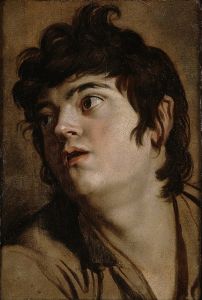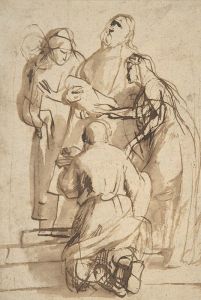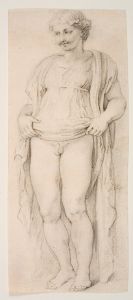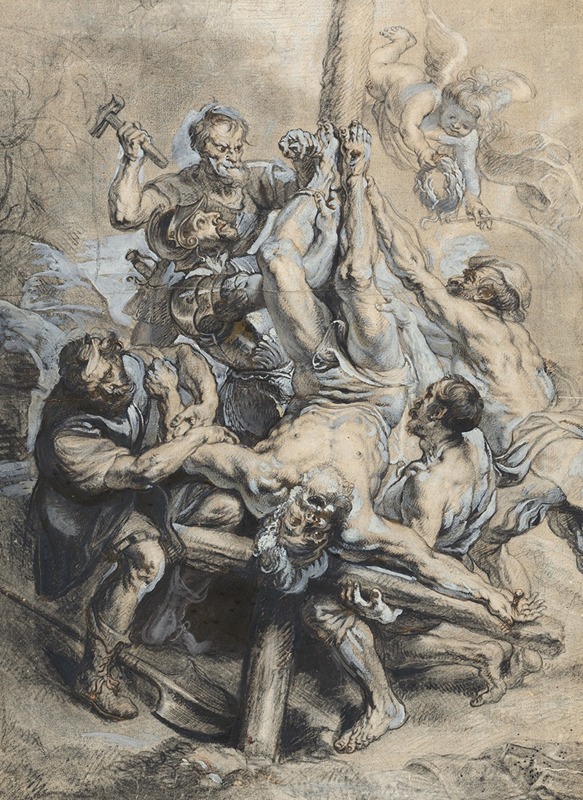
The Crucifixion of Peter the Apostle
A hand-painted replica of Peter Paul Rubens’s masterpiece The Crucifixion of Peter the Apostle, meticulously crafted by professional artists to capture the true essence of the original. Each piece is created with museum-quality canvas and rare mineral pigments, carefully painted by experienced artists with delicate brushstrokes and rich, layered colors to perfectly recreate the texture of the original artwork. Unlike machine-printed reproductions, this hand-painted version brings the painting to life, infused with the artist’s emotions and skill in every stroke. Whether for personal collection or home decoration, it instantly elevates the artistic atmosphere of any space.
Peter Paul Rubens, a prominent Flemish Baroque painter, is renowned for his dynamic compositions and vibrant use of color. Among his many works, "The Crucifixion of Peter the Apostle" stands out as a significant religious painting, though it is not as widely documented or as famous as some of his other masterpieces. Rubens' oeuvre often includes religious themes, and this painting is no exception, reflecting his deep engagement with biblical narratives and his ability to convey intense emotion through art.
"The Crucifixion of Peter the Apostle" depicts the martyrdom of Saint Peter, one of Jesus Christ's closest disciples and a foundational figure in Christianity. According to Christian tradition, Peter was crucified in Rome under Emperor Nero's rule. In a gesture of humility, Peter requested to be crucified upside down, as he felt unworthy to die in the same manner as Jesus. This unique aspect of Peter's crucifixion is a focal point in Rubens' portrayal, emphasizing the saint's devotion and humility.
Rubens' interpretation of this event is characterized by his signature style, which includes dramatic movement, robust figures, and a vivid palette. The composition likely captures the moment of Peter's crucifixion with a sense of immediacy and tension, drawing viewers into the emotional and spiritual gravity of the scene. Rubens' ability to convey the physical strain and spiritual resolve of Peter would have been intended to inspire piety and reflection among its viewers.
As with many of Rubens' religious works, "The Crucifixion of Peter the Apostle" would have been commissioned by a religious institution or a private patron, reflecting the Counter-Reformation's emphasis on art as a means of religious expression and instruction. Rubens was adept at creating works that aligned with the Catholic Church's goals during this period, using art to communicate religious themes in a direct and emotionally engaging manner.
While specific details about the painting's provenance, current location, or exact date of creation may not be extensively documented, Rubens' broader body of work provides context for understanding its significance. His paintings often served both devotional and didactic purposes, aiming to engage the viewer's senses and emotions to convey religious truths.
Rubens' influence on the Baroque movement and his ability to depict complex theological themes with clarity and emotional depth have cemented his reputation as one of the great masters of Western art. "The Crucifixion of Peter the Apostle," like many of his religious paintings, exemplifies his skill in bringing biblical stories to life, making them accessible and moving for audiences both in his time and today.





